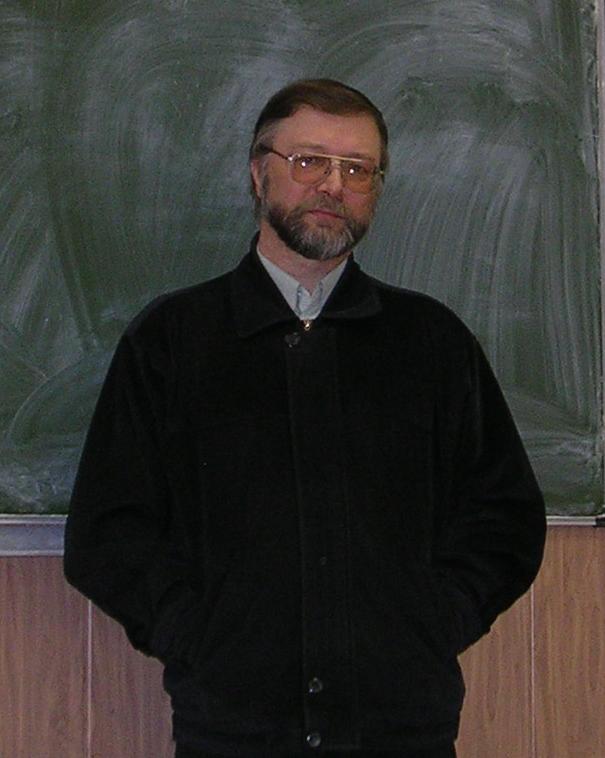ПН-ЧТ 8:30-17:00; ПТ 8:30-16:00
-
О вузе
- • Ученый совет
- • Ректорат
- • Институты и факультеты
- • Исследования и проекты
- • Преподавателю и сотруднику
- • Дополнительное образование
- • Международная деятельность
- • Контакты
- • Центр «Ин'Яз»
- • УМЦ «Перспектива»
- • Противодействие коррупции
- • Документы
- • Отделы и подразделения
- • Против террора
- • Профком преподавателей и сотрудников
- • Конкурсы на замещение должностей
- • Брендбук
- • Вход в систему ЭИОС
- • МЧС информирует
- • Координационный центр ИвГУ
- • Вход в корпоративную почту
- • Национальный проект «Наука и университеты»
- • Федеральный проект "Содействие занятости"
- • Совет ректоров
- Абитуриентам
- • Гид абитуриента
- • Приемная комиссия
- • Подготовительные курсы
- • Платные образовательные услуги
- • Общежития
- • Порядок заселения в общежития
- • Отзывы выпускников
- • Разбор олимпиадных заданий
- • Проект «Университетский лицей»
- • Видеоматериалы для подготовки к ЕГЭ
- • Центр профессиональной ориентации и содействия трудоустройству выпускников «Карьера»
- • Многопрофильная зимняя школа. Лекции по предметам гуманитарного цикла для победителей олимпиад
- Обучающимся
- • Библиотека
- • Документы
- • Институты и факультеты
- • Калькулятор пени
- • Обучение
- • Расписание
- • Спортивные новости
- • Иностранным студентам
- • Профком
- • Общежития
- • Охрана здоровья
- • Дистанционное обучение
- • Центр профессиональной ориентации и содействия трудоустройству выпускников «Карьера»
- • КОСС
- • Аспирантура
- • Информация о конкурсах и грантах
- • Дистанционные занятия для иностранных студентов
- • Страница добра
- • Ресурсный волонтерский центр финансового просвещения ИвГУ
- • Платные образовательные услуги
- Выпускникам
- • Центр профессиональной ориентации и содействия трудоустройству выпускников «Карьера»
- • Ассоциация выпускников
- • Вакансии
- • Отзывы выпускников
- Сведения об образовательной организации
- • Основные сведения
- • Структура и органы управления образовательной организацией
- • Документы
- • Образование
- • Образовательные стандарты и требования
- • Руководство. Педагогический (научно-педагогический) состав
- • Материально-техническое обеспечение и оснащённость образовательного процесса
- • Стипендии и иные виды материальной поддержки
- • Платные образовательные услуги
- • Финансово-хозяйственная деятельность
- • Вакантные места для приёма (перевода)
- • Абитуриенту
- • Доступная среда
- • Международное сотрудничество
- • Внутренняя система оценки качества образования
- Ученый совет
- Ректорат
- Институты и факультеты
- Исследования и проекты
- Преподавателю и сотруднику
- Дополнительное образование
- Международная деятельность
- Контакты
- Центр «Ин'Яз»
- УМЦ «Перспектива»
- Противодействие коррупции
- Документы
- Отделы и подразделения
- Против террора
- Профком преподавателей и сотрудников
- Конкурсы на замещение должностей
- Брендбук
- Вход в систему ЭИОС
- МЧС информирует
- Координационный центр ИвГУ
- Вход в корпоративную почту
- Национальный проект «Наука и университеты»
- Федеральный проект "Содействие занятости"
- Совет ректоров
ФГБОУ ВО «Ивановский государственный университет»
ПН-ЧТ 8:30-17:00; ПТ 8:30-16:00Сотрудники

Логинов Евгений Константинович
Общие сведения доктор физико-математических наук, ведущий научный сотрудник НОЦ «Актуальные проблемы математики и компьютерных наук» E-mail ek.loginov@mail.ru Преподаваемые дисциплины Векторный и тензорный анализ
Дополнительные главы математического моделирования
Избранные вопросы вычислительной и прикладной математики
Специальные разделы математического моделирования
Теоретическая механика
Теоретическая физика
Физика
Данные о повышении квалификации и (или) профессиональной переподготовке Диплом о профессиональной переподготовке (372408560459) «Теория и практика преподавания фундаментально математики в высшей школе». Квалификация – педагог профессионального образования. Регистрационный номер ТПФМ-26/2. Иваново, 28 апреля 2018 года
Удостоверение о повышении квалификации (372407173686) «Функционирование электронной информационно-образовательной среды университета». Регистрационный номер ИОС-5. Иваново, 16 мая 2018 года
Удостоверение о повышении квалификации (180001613054) «Практические подходы к реализации инклюзивного образовательного процесса в высшей школе». Регистрационный номер 04.08-43-03/4872. Москва, 23 ноября 2018 года
Selected Publications:
- E.K. Loginov, SU(2/1) gauge-Higgs unification, Int. J. Mod. Phys. A31 (2016) 1650102.
- E.K. Loginov and E.D. Loginova, Yang-Mills like instantons in eight and seven dimensions, J. Math. Phys. 55 (2014) 101701.
- E.K. Loginov, Standard model gauge coupling unification, Eur. Phys. J. C73 (2013) 2293.
- E.K. Loginov, Englert-type solutions of d=11 supergravity, IJMMP, 10 (2012) 1320005.
- E.K. Loginov and A.N. Grishkov, On some generalizations of groups with triality, Int. J. Algebra Comput. 23 (2012) 1250015.
- E.K. Loginov, Spontaneous compactification and nonassociativity, Phys. Rev. D80 (2009) 124009.
- E.K. Loginov, Classification of BPS equations in higher dimensions, Phys. Rev. D78 (2008) 065010.
- E.K. Loginov, Some comments on string solitons, Phys. Rev. D77 (2008) 105003.
- E.K. Loginov and A.N. Grishkov, On a construction of self-dual gauge fields in seven dimensions, J. Nonlin. Math. Phys. 14 (2007) 562–569.
- E.K. Loginov, On a class of gauge theories, J. Math. Phys. 48 (2007) 073522.
- E.K. Loginov, Simple Bol loops, Commun. Algebra 35 (2007) 133–144.
- E.K. Loginov, On a construction of multi-instantons in d≤8 dimensions, TMPh 142 (2005) 1533–1588.
- E.K. Loginov, Multi-instantons and superstring solitons, Phys. Lett. B618 (2005) 265–268.
- E.K. Loginov, Multi-instantons in seven dimensions, J. Math. Phys. 46 (2005) 063506.
- E.K. Loginov, Self-dual Yang-Mills fields in pseudo-Euclidean spaces, J. Phys. A37 (2004) 6599–6604.
- E.K. Loginov, On the Bol loops, Math. Notes 75 (2004) 693–701.
- E.K. Loginov, On linear representations of analytic Moufang loops, Math. Notes 73 (2003) 424–428.
- E.K. Loginov, On the embedding of analytic Moufang loops in alternative algebras, Math. Notes 69 (2001) 313–315.
- E.K. Loginov, Analytic loops and gauge fields, Nucl. Phys. B606 (2001) 636–646.
Research Statement:
In the past few years, increased attention has been paid to gauge field equations in space-time of dimension greater than four, with a view to obtaining physically interesting theories via dimensional reduction. Such equations and connected with one the Bogomol'nyi-Prasad-Sommerfield states appear in the supergravity, in the low-energy string theory and M-theory. Using solutions of the Yang-Mills equations makes possible to obtain soliton solutions in these theories. Therefore the search and investigate new solutions of the higher-dimensional self-dual Yang-Mills equations having applications in particle physics is one of my interests.
My current research concerns also various aspects of classical solutions in 11D supergravity. There has recently been a great deal of interest in finding de Sitter and anti-de Sitter vacua of supergravity and string theory. This is motivated in part by the desire to construct possible models for late-time cosmology. Interestingly, the gravity-matter system may be reinterpreted as a pure gravity theory with a torsion that are given locally by the Cayley structure constants of a geodesic loop in the affinely connected space. Thus, we may study the Bose sector of 11D supergravity using not only geometric but also algebraic methods.
Methods of the Cayley algebra also may be applied to research of supersymmetric string solitons. It is well known that in addition to the five-brane solutions one-brane and two-brane solutions of heterotic string theory are existed. The construction of these solutions involves crucially the properties of octonions. In particular, a connection between strings and octonions that is provided by the existence of super Yang-Mills theories and Green-Schwarz superstring action in D=3,4,6,10 with the number of transverse dimensions (1,2,4,8) coinciding with the dimensions of the four Hurwitz algebras, cannot be accidental. Therefore the role of octonions and other exotic algebraic structures in superstring theory is also interesting for me.
From the viewpoint of mathematical physics, some above works has made most conspicuous the possibly central role played by octonions and mathematical structures connected with one. This topic goes in and out of fashion and from time to time somebody takes it up and pushes it a little further. The octonions have a sort of magical attraction and the feeling is that one day their very characteristic special features will find a natural application. It is certainly true that some of the special features involve exceptional Lie algebras, which play a role in the particle physics because of its relation with GUT, supergravity and superstring theory.
